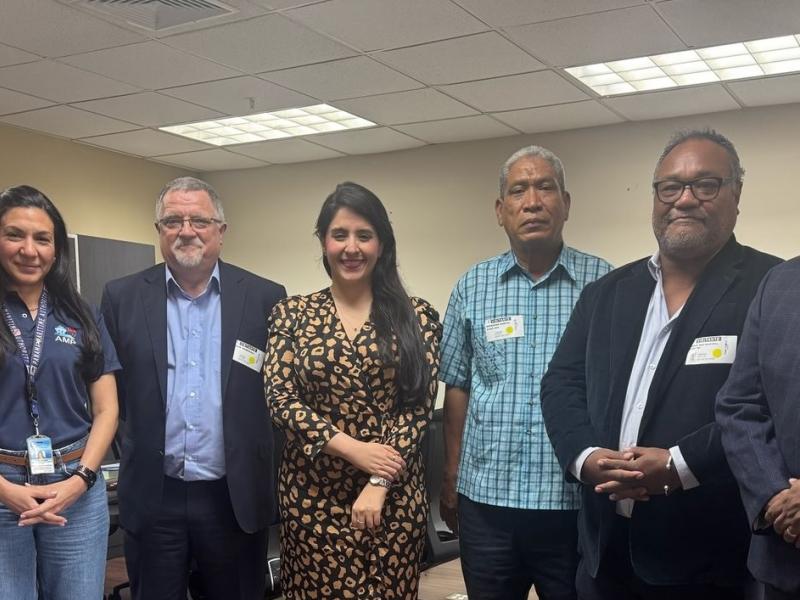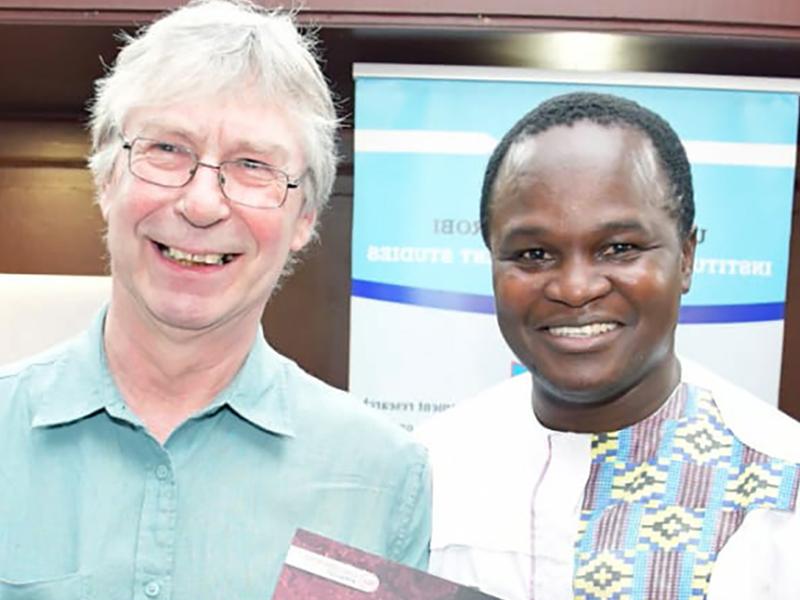Aviation workers who exceed 6mSv a year of exposure to cosmic radiation are recommended to stop flying under new guidance issued by the government of Argentina, its national airline and union representatives.
Excessive exposure to cosmic radiation has been linked to health problems including cancer and miscarriage during pregnancy. It is vital for aircrew safety that levels of exposure are monitored and the health effects checked regularly.
ITF affiliate AAA (Asociación Argentina de Aeronavegantes) has been pushing for more than two years for these recommendations. AAA, the government of Argentina and the airline Aerolineas Argentinas have come together to publish Technical Sheet: Cosmic Radiations in Commercial Aviation. This contains recommendations for limits on exposure to cosmic radiation for civil aviation workers.
“This is an essential tool to take care of the health of our crew members, with solid scientific bases,” said Juan Pablo Brey, Secretary General of AAA. "It is a historic achievement for aviation in Latin America.”
Cosmic radiation is similar to other ionising radiation seen in nuclear power plants or in X-ray machines. We are being bombarded by particles from space, and particularly the sun, all the time, but people on the ground are largely protected from the effects by the earth's atmosphere.
At the altitudes commercial aeroplanes fly, the atmosphere is thinner and so exposure to ionising radiation is much greater. Aircrew will typically be exposed to higher levels of radiation than workers in nuclear power plants or operators of X-ray machines.
It is technically impossible to protect against cosmic radiation and there are no personal dosimeters to measure the exposure dose.
However, it is possible to estimate exposure based on flight plans. The length of a flight, its altitude, the time of day, the proximity to the polar regions — all these things affect exposure, allowing it to be calculated.
A flight from Rome to Buenos Aires during the day, for example, would expose an aviation worker to 0.0374mSv of radiation. The new guidance recommends that workers who exceed 1mSv in a year receive medical checks and those who exceed 6mSv stop flying. 1mSv is the equivalent of 27 Rome to Buenos Aires flights. 6mSv would be around 160 flights. Workers on a shorter internal route from Bariloche to Buenos Aires could fly more than 1150 times before they would hit the 6mSv limit.
Taking into account the investigations of AAA and the recommendations of the International Commission on Radiological Protection, the Superintendent of Labour Risks at the Ministry of Labour in Argentina, made the following recommendations:
To the Airlines:
• Do not schedule more flights for crew members who have reached an exposure dose of 6 mSv / year. This is the absolute limit.
• Declare workers who exceed 1mSv / year as ‘personnel exposed to radiation’ for the purposes of establishing medical examination.
• Use any of the available systems to keep track of the doses received by all crew members.
• Make available to workers the dose calculations made.
• Plan crew flight programmes so that exposure dose calculations do not exceed 6 mSv / year.
• Create a health file for each of the workers exposed to radiation.
• Offer training on the prevention of cosmic radiation exposure.
To the workers:
• Do not to make more flights if received dose calculations exceed 6 msV / year.
• Pregnant workers women must report their condition to the airline immediately.
• You should make sure you know about exposure to cosmic radiation.
• You should ask your employer for the dose information calculated for the flights you operate.
• You should agree to undergo periodic medical examination.
"This is a great achievement for the protection of crew members’ health around the world and particularly for the Southern hemisphere,” said Gabriel Mocho Rodriguez, ITF’s Civil Aviation Secretary. “Until this technical note, there were no recent studies of the impact of cosmic radiation on crews flying in the South. It is an example of how the participation of workers is essential for the development of the civil aviation occupational health and safety.”
"This great effort demonstrates the quality of our affiliates that always are at the forefront for the safety of civil aviation workers. From the ITF we congratulate this great achievement with worldwide importance," said Edgar Díaz , ITF Americas Regional Secretary.



